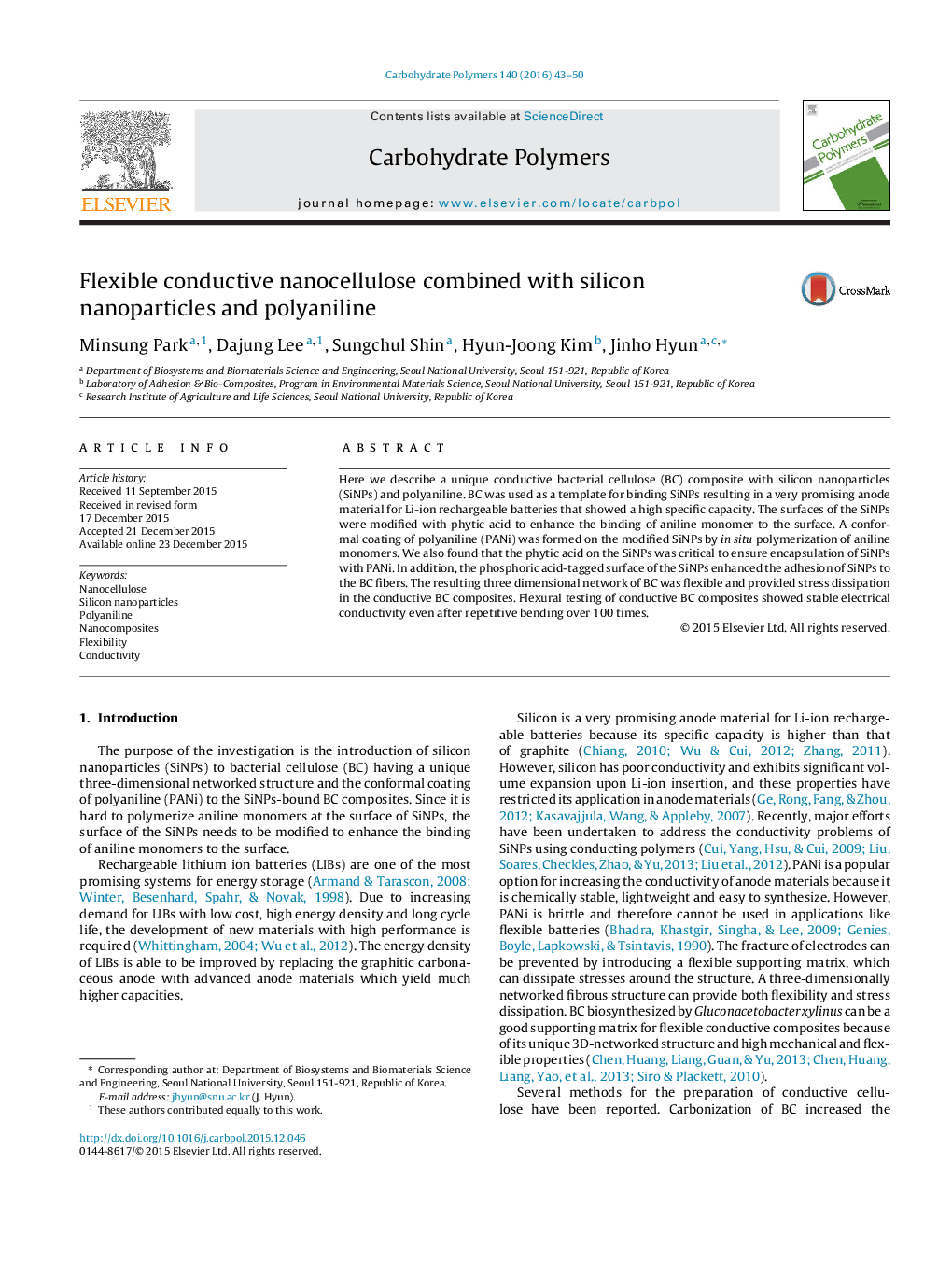| Article ID | Journal | Published Year | Pages | File Type |
|---|---|---|---|---|
| 1383434 | Carbohydrate Polymers | 2016 | 8 Pages |
•BC was used as a template for binding SiNPs resulting in a promising anode material.•A conformal coating of PANi was formed on the modified SiNPs by in situ polymerization.•The 3D network of BC provided stress dissipation in the conductive BC composites.•The conductive Si-PANi-BC composite showed stable conductivity under repetitive bending stresses.•It confirmed its potential for use as a flexible anode component in flexible rechargeable batteries.
Here we describe a unique conductive bacterial cellulose (BC) composite with silicon nanoparticles (SiNPs) and polyaniline. BC was used as a template for binding SiNPs resulting in a very promising anode material for Li-ion rechargeable batteries that showed a high specific capacity. The surfaces of the SiNPs were modified with phytic acid to enhance the binding of aniline monomer to the surface. A conformal coating of polyaniline (PANi) was formed on the modified SiNPs by in situ polymerization of aniline monomers. We also found that the phytic acid on the SiNPs was critical to ensure encapsulation of SiNPs with PANi. In addition, the phosphoric acid-tagged surface of the SiNPs enhanced the adhesion of SiNPs to the BC fibers. The resulting three dimensional network of BC was flexible and provided stress dissipation in the conductive BC composites. Flexural testing of conductive BC composites showed stable electrical conductivity even after repetitive bending over 100 times.
